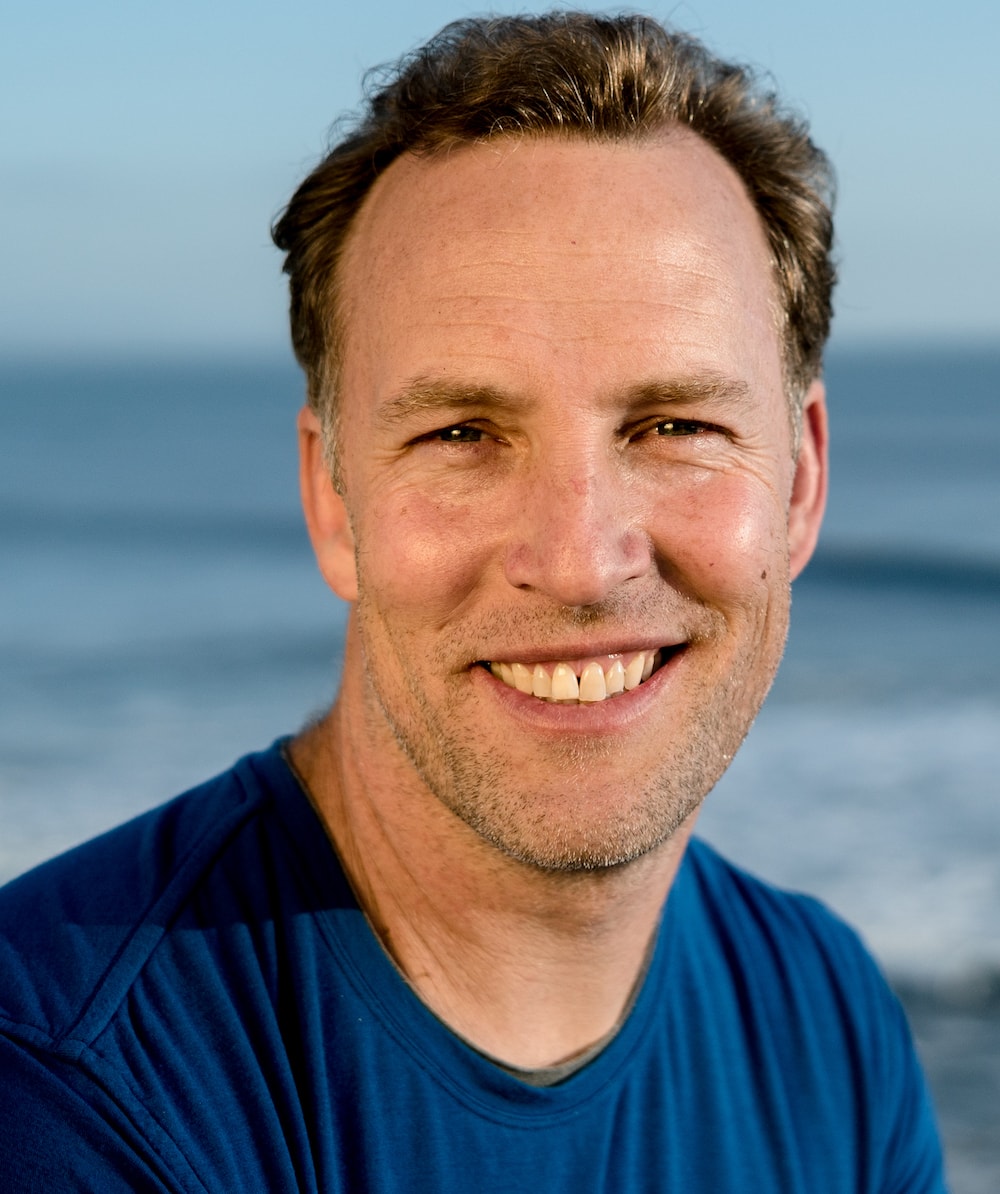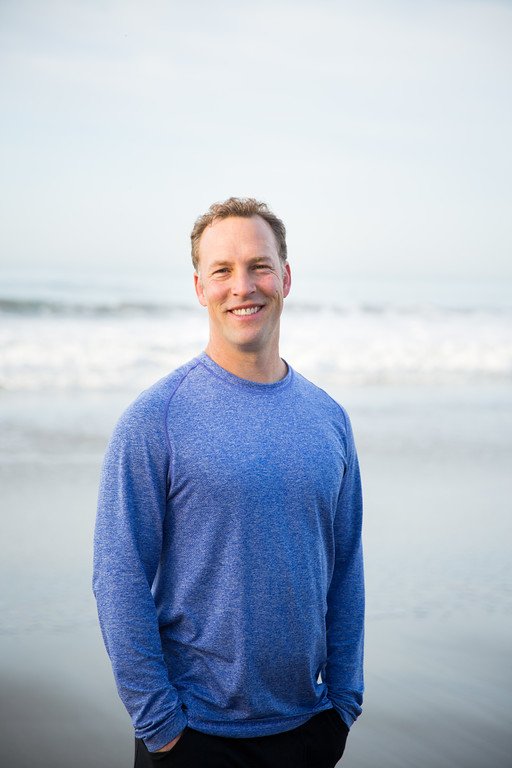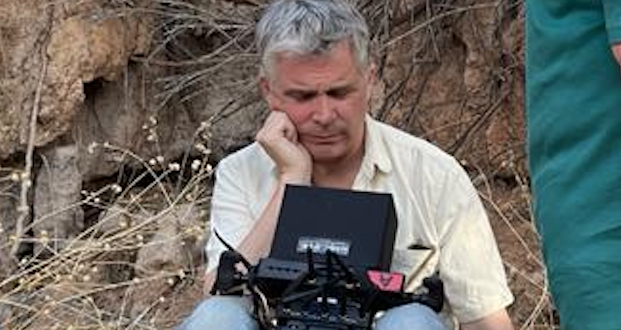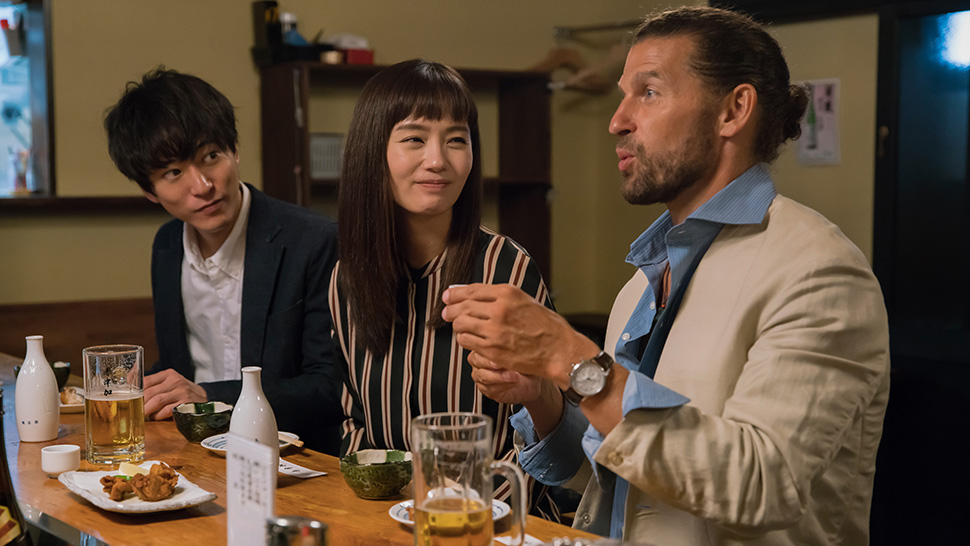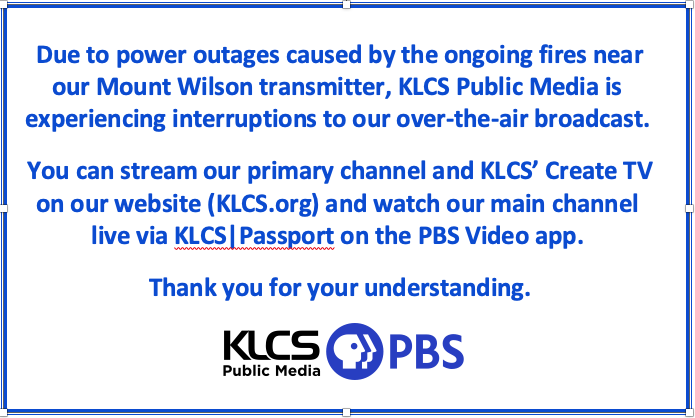Discover the ancient secrets of Tai Chi and Qi Gong, practices renowned for balancing inner energy and fostering tranquility and wellness. Join us as learn from, and about, Lee Holden, the Santa Cruz-based master teacher whose show, “Your Fountain of Youth with Lee Holden,” airs on KLCS Public Media. In this exclusive interview, Lee shares his journey into Tai Chi, his connection with PBS, and reveals his favorite serene spots for practicing Tai Chi in Los Angeles. This conversation promises to inspire and rejuvenate your pursuit of stress relief and youthfulness.
Lee, how long have you been doing Tai Chi?
I’ve been doing Tai and Qi Gong for 35 years.
What drew you to Tai Chi to begin with?
I was a collegiate soccer player; I had a back injury playing soccer. I tried all the conventional routes, I got cortisone shots, I took pain killers, and nothing was working. In fact, now I had back pain and a stomach ache from all the medication that I was on. And I had taken martial arts as a kid and I remember this one martial arts teacher, he broke this big stack of bricks and I was this 10, 11-year-old kid. And I said, How did you do that? He said, I used chi. So it stood out in my mind that something about chi was powerful and he grabbed me by the lapel of my Gi and he said, “Qi is for healing people and not for hurting.” And so I was like, I’ve got to go see that guy! So, I went back to my hometown, Los Gatos, and he showed me Qi Gong exercises for back pain. In one session of acupuncture and Qi Gong exercises, I was 70 percent better. After the second session, I was 90 percent better. I did three sessions and I was back playing on the team the following week. And everybody was like, “How did you do that?” So, I was super hooked on Qi Gong ever since then. And then I started studying Chi Gong and Tai Chi while I was at U.C. Berkeley; at that point I was studying psychology and I wondering, “When are we going to learn some techniques on how to make people feel better emotionally?” I’m like – year two, year three, still waiting, all the diagnostics, learning about statistics, and I finally got fed-up and I was in the spiritual bookstore reading about Qi Gong and energy work, it was the book by Mantak Chia called “Transform Stress into Vitality”, and it was all about emotions and how to transform one state into another state and all these different practices. And I was like, “Wow! Here’s something to actually do to help people feel better.” I bought the book and I walked out of the bookstore and on the telephone pole was a flyer for the author that was going to be in town that week. So I went and did the workshop, but luckily for me, I was a poor college student and I couldn’t afford it. So what I did was, I asked the organizer if I could work for them and they had me working in the back room of the bookstore. So every time Mantak Chia came to town, this particular teacher, I would work for him. And when I graduated college, I said, “You know, I really just want to keep studying this!” So I came up to him and I said, “By the way, do you have any jobs available for me?” And he said, “Yes, you write my next book.” He had a center in Thailand, so off I went to Thailand. When I graduated, I spent three or four months just working on books and training with him!
What was his name?
Mantak Chia. He’s like a world famous meditation, Qi Gong master. He was really well-known, he wrote a whole bunch of best-selling books in the ‘80’s and ‘90’s.
What was the name of the bookstore in Berkeley?
Shambala Books.
I’m glad you’re out there, because this is important.
Oh thank you, it is. And we’re seeing incredible results with people doing their practice. It’s beautiful. People are healing their bodies without medication, just like me. I’m just so passionate about teaching people how to create a healing effect within themselves.
Your bio states you’re a master, so who did you study with to get mastery? Is it Mantak Chia?
Yes, that’s correct. He’s still teaching, he’s in his 80s.
Ever think of a Season Two with these masters?
I would love to do that, I would love to host something and bring some masters on a PBS show. That’s a great idea.
I love your episodes, many are in Yosemite. Was that easy to film?
No, it wasn’t easy. We hired somebody who was a photographer for Yosemite. She showed us specific areas that we could go and do our filming. So we actually had to climb and hike some treacherous trails to get to those spots, with all the equipment and everything. It was a full on four-person team hiking the old Yosemite trails to get to the “secret spots” and to places where we could do the practice and film it.
Did you have a lot of onlookers at the park when you were doing it?
No, because it was really inaccessible where we were, you had to climb over fallen rocks that made the trail inaccessible. There’s a few hikers that walked by, but it was like in the three or four days, maybe five people walked by.
It looked like you were at Glacier Point.
Yeah, at the very top.
That’s a very popular spot.
It was kind of off-season, so it was a little bit cold. At Glacier Point, we hiked down below, off the trails. When we were by Bridal Falls; that’s where we were scrambling over the rocks.
What made you want to do your filming in Yosemite? The beauty, and I love filming in nature because Qi Gong is a practice that mirrors the movements of nature, so I wanted to have something beautiful where it’s almost like you’re doing your workout, but it’s also a piece of art and you feel connected to nature.
My very first [recording] was on VHS tape and it was inside and I was like, “It’s not capturing the spirit of Chi Gong.”
What was your path to getting this show on PBS and to doing Tai Chi on TV?
I made videos like this before. This was in 2004, we filmed them in the Redwood Forest here in Santa Cruz. Beautiful redwood forest, and I wanted it to be like the same thing; I wanted to be out in nature and I had a small team and we went to the Redwood Forest. I self-funded it. I needed about $25,000 to fund this project and I didn’t have the money and all of a sudden I got this gig to teach chi gong at a corporation. They said they’d pay me $10 per person for 12 weeks, and all up front, and about 200 people showed up. So it was exactly the dollar amount that I needed to fund the four DVDs. So I did it, funded it, and one of my patients, she was a distributor for content on APT, American Public Television. She said, “Let me send your video to APT and see if we can get you a show.” San Diego said “Yes.” We went down and filmed a pledge drive in San Diego, and it pledged really, really well. And it went up on the mainframe of PBS; we didn’t even know this was happening, but all of a sudden, it was airing in nine out of the 10 biggest markets in the country. And funny enough, at that time, when it started airing all over the country, we didn’t even have a website, so I was getting 40 to 50 phone calls a day to my home phone number. That was 2006 and PBS kept saying “ We want more content, we want more shows, your show is pledging really well.” So we went out and filmed another seven DVD series in 2007 and that was at Lake Tahoe. We did more and more PBS pledge shows and we did another shoot in 2010. So, from 2006 to 2012 or 20013, I had a lot of DVD sales happening through pledge drives on PBS. It was one of the more popular shows.
But now it’s airing on Create TV and our primary channel as well.
That’s right, just recently we switched from pledge drives to syndicated to whenever the station wants.
You have a PBS connection, and we’re airing your show.
They know that it works really well, that [PBS’] audience really resonates with this practice. We’ve done a bunch of pledge shows and now we’re doing this. They keep telling me, for a movement show, this is one of the more popular ones that they’ve run. There’s a couple yoga shows that have been popular, but this has been one of their go-to programs. I feel super fortunate to be able to work with PBS on this kind of project.
What do you say when people want to get started? What are some basic Tai Chi movements you tell them to do?
The easiest way to do Tai Chi and Qi Gong is to follow the video or be in a class, because it’s hard to do reading from a book. So I love video education. I always tell people, it doesn’t have to be a long practice. The beauty about Qi Gong is you don’t have to memorize a form. You can just show up, take your class, get all the benefits. You don’t have to memorize it and figure things out, and you can do so in a short amount of time. One of my PBS pledge drives was called “Seven Minutes of Magic” and it was a book and DVD. I used to teach people a seven-minute morning routine and a seven minute evening routine to start the habit of your practice. You only need seven minutes for a shift and a change in your energy system. So, that was one of the things that I helped people start things off; either an introductory practice or a seven minutes practice, where they didn’t have to do too much and it wasn’t a big time commitment. And then they were like, “Wow, I feel so great!” it was easy for them to want to do more.
I like to do Tai Chi right before I go to bed, when do you do it?
Evening time is a great time to do it, as well as morning. Any transitional time can be really effective. When you wake up in the morning, you do a little practice. It can help you wake up, focus your mind, get your energy up. Different movements do different things for you. So, in an evening routine, there’s going to be movements that clear stress, clear tension out of the body. And the morning, it’s going to be a more energizing routine. The other thing I like to do for beginners is to give them a routine that helps solve an issue for them, let’s say, “I’ve got a lot of tension in my upper back, neck and shoulders,” let’s do a routine for upper back, neck and shoulders. “Wow, that feels way better!”
Is there a wrong way to do movements? Is it a strict practice?
It depends on the teacher. In Tai Chi, especially when it’s a martial arts context, you want to get the movements right because it’s for self-defense. When you’re doing Qi Gong for health and healing, the wrong way to move the body is not to listen to your body. What you want to be able to do is develop a listening skill to your intelligent energy system that’s within you and be able to move. The real detrimental thing for people in terms of health, is not moving. If you want to develop health issues and problems and fatigue, you don’t move your body; you’re going to develop all kinds of problems. So getting movement happening, starting your practice, most of the time, if you’re listening, and especially within a Qi Gong practice that’s very gentle, it’s going to be beneficial. With practice, there’s better and better ways to do your Qi Gong.
It’s so gentle, is there a benefit, even though it’s gentle movement?
Yeah, part of the benefit is that it is gentle; we feel like we need to really pulverize our body in the gym, or beat it into the pavement with a run. But really, this practice is for health and longevity. Qi Gong was called the “Arts of Preventing Disease and Prolonging Life.” So the gentleness helps to keep your body youthful and healthy, even as you age. Sometimes I say, “You don’t always have time to go to the gym, do a stretch class and a mindfulness meditation, but Qi Gong does it all together in a cohesive way, in a 30 minute practice. Especially with my style of Qi Gong, you’re going to get a workout, you’re going to get a stretch, and you’re going to get a flow.
Your show feels like a moving meditation.
Exactly, it’s a moving meditation, where let’s say you go to the gym, often we want to disconnect from our bodies. You’ll see people on treadmills watching TV, so you’re just like, “Ok, I’m going to beat my body up a bit and I’m going to just tune my mind out,” this is the opposite. You’re like tuning in, you’re using the body as a tool for meditation, so it’s a mindfulness emotion type of practice. And that’s part of the healing, that when our minds and bodies connect on a deep layer, healing happens.
The way you described your path to PBS and Tai Chi, there was a lot of synchronicity; you got the book, the poster, working there…
Yes, there was a lot of synchronicity (laughs), yeah I got the book, the poster, he gave me a job, and there was no interview process there either, it was just like “Yup, you’re hired, you’re my ghostwriter.” (laughs)
How did that work, did you just type what he wanted verbatim or did you have to shape it?
What I did was, I would go to his house in the morning and we’d train and then he’s say, “Write it up,” so then I’d write what we talked about. And then I would sit in his workshop all day on a particular topic. Every workshop was a week-long training on a topic. Then I would take the workshop and write up my notes and then talk to him about it and basically show him what I had. There was a small writing team, three of us, so we’d all discuss it together. And then, every morning I’d go over and if I had any questions, I had access to the master.
And then even the PBS path was also synchronicitious.
Yeah, it was. When you listen to yourself, there’s clues along the way, you don’t resist a flow of energy that can be felt in your body or even heard in your mind.
When you come to L.A. is there a place you like to visit here?
I definitely like the Hollywood hills. I was just on KTLA, teaching people how to distress for the holidays. I was there with some friends and doing Qi Gong in Santa Monica Mountains, it was beautiful, like on the other side of Malibu, Westlake area. I also love the beaches of Santa Monica, like the cliffs of Santa Monica, I love doing Qi Gong down there too.
What’s your favorite move to do, 10 minutes for yourself?
I love Embrace the Tiger, Return to the Mountain. And even as the name suggests, it means “embrace the tiger” is about harnessing your energy, your strength and your inner power and “return to the mountain” is standing strong in the present moment, and cultivating inner peace.
I do Circle the Globe and the most popular movement is Waving Through Clouds.
Yeah, yeah, I love Cloudy Hands, Waving Through Clouds, yes, so beautiful. Oh, that’s so cool that you have a practice.
Thank you Lee. Anything you want to add that I haven’t asked?
The way in which we’re presenting Qi Gong on PBS is something that’s really accessible, it’s modern, it solves issues that we as modern people have. So don’t think your Qi Gong, or your Tai Chi practice is for older people to do in the park. It’s for everybody who wants to take charge of their own health and healing. And to really connect to your internal energy is a way to connect to nature; a way to connect to the divine within us and all around us. It’s just an expression of divine connection through movement. Visit HoldenQiGong.com and we have a lot of free resources on there.
Your Fountain of Youth with Lee Holden airs Wednesdays at 6:00 AM and, beginning October 2nd, at 5:30 PM on KLCS Public Media, visit our website for more details and a full schedule: klcs.org/schedule
Learn more about Lee and Qui Gong on his website: HoldenQiGong.com Or keep up with Lee on social media: Instagram (@holdenQi Gongofficial); Facebook (@holdenQi Gong); YouTube(@HoldenQi Gong

